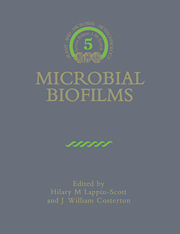Series Preface
Plant and Microbial Biotechnology
Published online by Cambridge University Press: 24 November 2009
Summary
The primary concept of this series of books is to produce volumes covering the integration of plant and microbial biology in modern biotechnological science. Illustrations abound: for example, the development of plant molecular biology has been heavily dependent on the use of microbial vectors, and the growth of plant cells in culture has largely dawn on microbial fermentation technology. In both of these cases the understanding of microbial processes is now benefitting from the enormous investments made in plant biotechnology. It is interesting to note that many educational institutions are also beginning to see things in this way and are integrating departments previously separated by artificial boundaries.
Many definitions have been proposed for biotechnology but the only one which has specifically defined environmental biotechnology is that of the European Federation of Biotechnology as The specific application of biotechnology to the management of environmental problems, including waste treatment, pollution control and integration with nonbiological technologies. The study of microbial biofilms is clearly an excellent illustration of environmental biotechnology. The manipulation and control of biofilms is of great interest to industries, including agriculture, chemicals and healthcare.
One of the leaders in the study of biofilms has been Bill Costerton, especially in his early studies when he produced superb electron micrographs to demonstrate the fascinating microbial assemblages which developed in biofilms. However, he rapidly proceeded to demonstrate important physiological functions which occured in these interesting layers. In 1986, Hilary Lappin-Scott joined him to work partly in Cambridge and partly in Calgary on the biofilms associated with oil wells, so starting a long and productive association.
- Type
- Chapter
- Information
- Microbial Biofilms , pp. xiii - xivPublisher: Cambridge University PressPrint publication year: 1995

